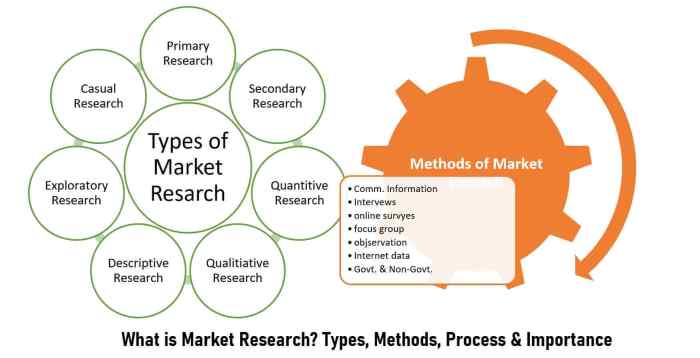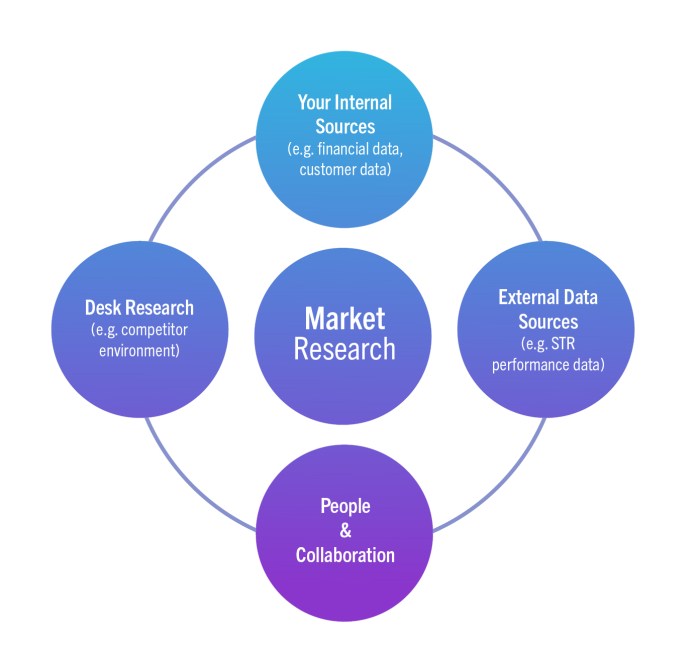
As Customer Market Research Techniques takes center stage, this opening passage beckons readers into a world crafted with good knowledge, ensuring a reading experience that is both absorbing and distinctly original.
Customer market research is a vital tool for businesses seeking to understand their target audience and make informed decisions. By exploring different research methods and real-life examples, companies can effectively implement strategies to drive success.
Customer Market Research Techniques
Customer market research plays a crucial role in guiding business decision-making by providing valuable insights into consumer behavior, preferences, and trends. By conducting thorough market research, businesses can better understand their target audience, identify opportunities for growth, and tailor their products or services to meet customer needs effectively.
Methods for Conducting Customer Market Research
- Surveys: Gathering feedback from customers through surveys can provide valuable data on preferences, satisfaction levels, and areas for improvement.
- Focus Groups: Bringing together a small group of individuals to discuss specific products or services can offer in-depth insights into consumer perceptions and preferences.
- Interviews: Conducting one-on-one interviews with customers allows for a deeper exploration of their experiences, opinions, and feedback.
- Observational Research: Observing customer behavior in real-time, whether in-store or online, can reveal valuable insights into purchasing patterns and preferences.
Successful Implementation of Customer Market Research Techniques
One notable example of successful implementation of customer market research techniques is the case of a leading beverage company that used surveys to gather feedback on new product flavors. By analyzing the survey data, the company was able to identify the most popular flavor choices among consumers, leading to the successful launch of a new product line that resonated with their target audience.
This demonstrates how customer market research can drive informed decision-making and enable businesses to meet customer demands effectively.
Market Analysis Techniques
Market analysis is a crucial process that helps businesses understand the current market landscape and make informed decisions. By conducting a comprehensive market analysis, businesses can identify trends, opportunities, and potential threats that may impact their operations.
Steps for Conducting a Comprehensive Market Analysis
- Define the scope of the analysis, including the target market and competitors.
- Gather relevant data from various sources, such as market reports, surveys, and industry publications.
- Analyze the data to identify key market trends, consumer preferences, and competitive landscape.
- Identify opportunities for business growth and potential threats that may affect market positioning.
- Develop strategies based on the findings to capitalize on opportunities and mitigate risks.
Quantitative vs. Qualitative Market Analysis Methods
Quantitative market analysis involves the use of numerical data and statistical methods to measure market size, growth rates, and customer demographics. On the other hand, qualitative market analysis focuses on understanding consumer behavior, preferences, and motivations through interviews, focus groups, and observations.
| Quantitative Market Analysis | Qualitative Market Analysis |
|---|---|
| Uses numerical data and statistical methods. | Focuses on understanding consumer behavior. |
| Measures market size and growth rates. | Explores consumer preferences and motivations. |
| Provides concrete data for decision-making. | Offers insights into consumer perceptions. |
Role of Market Analysis in Business Growth
- Identifying emerging trends and market opportunities.
- Understanding customer needs and preferences.
- Assessing competitive threats and market risks.
- Informing strategic decision-making and business planning.
Market Volatility Factors

Market volatility can have a significant impact on businesses in various industries, affecting their profitability, operations, and overall competitiveness. Understanding the key factors contributing to market volatility is crucial for businesses to develop effective strategies to mitigate risks and adapt to changing market conditions.Explain how market volatility can impact businesses and consumer behavior.Market volatility can be caused by a variety of factors, including economic indicators, geopolitical events, changes in government policies, and shifts in consumer preferences.
These factors can lead to fluctuations in demand, supply chain disruptions, and changes in pricing dynamics, all of which can impact businesses in different ways. For example, sudden changes in commodity prices can affect production costs for manufacturers, while fluctuations in exchange rates can impact the profitability of import/export businesses.Provide strategies for businesses to mitigate risks associated with market volatility.To mitigate risks associated with market volatility, businesses can implement several strategies, including diversifying their product offerings and customer base, hedging against currency and commodity price risks, maintaining strong relationships with suppliers and customers, and closely monitoring market trends and developments.
Additionally, businesses can leverage technology and data analytics to make informed decisions and quickly adapt to changing market conditions. By proactively managing risks and staying agile, businesses can better navigate market volatility and position themselves for long-term success.
Impact of Economic Indicators
Economic indicators such as GDP growth, inflation rates, and unemployment levels can have a significant impact on market volatility. Businesses need to closely monitor these indicators and assess their implications on consumer spending, investment levels, and overall economic stability. By understanding the relationship between economic indicators and market volatility, businesses can anticipate potential risks and opportunities and adjust their strategies accordingly.
Market Research Strategies

When it comes to market research strategies, companies need to focus on developing effective approaches that provide valuable insights into consumer behavior, market trends, and competitor activities. This information is crucial for making informed business decisions and staying ahead in the industry.
Importance of Continuous Market Research
Continuous market research is essential for staying competitive in the industry. By consistently gathering data and analyzing market trends, companies can adapt their strategies, products, and services to meet changing consumer demands and preferences. This helps businesses remain relevant and responsive to market dynamics, ultimately leading to long-term success.
Innovative Market Research Approaches
- Utilizing Artificial Intelligence (AI) and Machine Learning: Companies are leveraging AI algorithms to analyze large volumes of data quickly and accurately, providing valuable insights into consumer behavior and market trends.
- Social Media Listening: Monitoring social media platforms allows companies to gather real-time feedback from customers, track brand sentiment, and identify emerging trends in the market.
- Virtual Reality (VR) Market Research: Some companies are using VR technology to create immersive research experiences, allowing them to test product concepts and gather feedback in a simulated environment.
- Collaborative Co-Creation: Engaging customers in the product development process through co-creation workshops and online communities can provide valuable insights and foster a sense of brand loyalty.
Conclusively, mastering customer market research techniques can be the key to unlocking business growth and ensuring long-term success. By staying agile and adapting innovative approaches, companies can navigate market challenges with confidence.
Helpful Answers
How crucial is customer market research for business decision-making?
Customer market research is essential as it provides valuable insights into consumer behavior and preferences, enabling businesses to tailor their strategies effectively.
What are some innovative market research approaches used by successful companies?
Successful companies often employ techniques like predictive analytics, social media monitoring, and interactive surveys to gather data and make informed decisions.
How can businesses mitigate risks associated with market volatility?
Businesses can mitigate risks by diversifying their product offerings, maintaining financial stability, and staying informed about market trends and changes.




